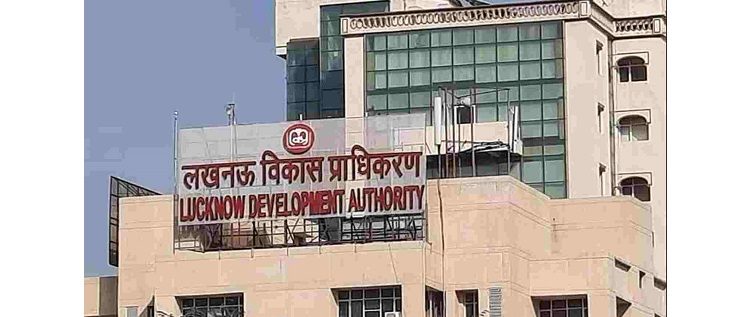Gera further added that “The Union budget provides for an increased deduction of Rs 1.5 lakhs (in addition to the existing Rs 2 lakhs) for interest paid towards purchasing a new home. The benefit of the additional deduction is substantial. The fact that the benefit is valid only till 31st March 2020 will motivate people to accelerate their purchase decision, this will lead to a clearing of the inventory in the sub Rs 45 lakh segment. Out of 80,062 homes for sale, about 20% i.e 16,322 homes are priced between Rs 25 - 35 lakhs and about 15% i.e 12,538 homes are priced between Rs 35 - 45 lakhs. Current levels of inventory are approximately 1 year’s supply based on recent trends; however, we expect this inventory to get sold out and more inventory launched in this segment. The 31st March 2020 sunset for this benefit will slow down indiscriminate supply infusion in this category. We expect to see a price rise driven by this segment. The challenge of liquidity however continues and is the dark cloud over the industry. Moving the regulation of HFI’s under the RBI is likely to further tighten the lending norms for the industry.”Since the implementation of RERA, number of live projects in Pune has reduced from the peak of 3,733 projects in Jun ’17 to 3471 in Jun ’19. As of Jun ’19, the total number of projects on hold (where work has commenced and presently stopped) has reached 242 (the figure of 3471 live projects excludes these 242 projects). These 242 projects consist of 39,882 apartments and based on our prior data, 23,793 are sold. This means approximately ~24000 families are stuck with incomplete projects at present. The report looked at the stage of construction (EARLY, MID, END and READY) and compared it to when the project was launched and found that about 484 projects were launched pre 2015 and are still live. This constitutes about 14% of the total inventory and is a reasonable estimate of delayed projects. This is over and above the projects that are on hold. Looking at segment-wise share of new launches there is evidence to suggest that customers are moving up the value chain (assuming supply follows the demand pattern). There has been a ~2.2x growth in the number of new launches in the Premium Plus segment over the last 12 months - 5,964 units were launched in the 12 months ended Jun ’18 which have now increased to 13,517 units for the 12 months ended Jun ‘19. Shares of Value, Premium and Premium Plus segments have all increased at the expense of the Budget segment where the share in new launches has dropped to 39.57% in the last 12 months compared to 49% for the 12 months ended Jun ‘18. This validates the earlier observation made 6 months ago about the Oversupply in the budget segment. This is clearly in the process of playing out. The inventory overhang has continued to improve and the current inventory overhang has dropped from 12.49 months in Jun ’18 to 9.75 months in Jun ’19. The budget segment continues to have the lowest inventory overhang of ~8 months. The Union Budget is likely to boost this segment further. CONCLUSION It has been a prolonged downcycle for the real estate industry with quite a few regulatory and market challenges to contend with over the past 4-5 years. However, we are finally seeing the real estate industry putting in a positive performance. The price erosion occurring has finally been arrested. Sales, New Launches and Offtake all are showing healthy growth rates. Unsold stock is at an all- time low while new launches are at a high. This compounded with the time bound interest deduction benefit ought to see sales improve in the coming months. This has the potential of kick starting a long overdue period of price rise. Structural issues with liquidity and cash flow management remain however amongst developers with weak balance sheets. The market seems to have separated the wheat from the chaff with the implementation of RERA as reflected in the number of ongoing projects coming down. Also read http://realtyplusmag.com/developers-looking-towards-rbi-to-revise-lending-amenities/
E - PAPER
Pune residential real estate market is showing signs of recovery
Gera Developments, pioneers of the real estate business and the award-winning creators of premium residential and commercial projects in Pune, Goa and Bengaluru, today presented the Gera Pune Residential Realty Report for Jan - Jul 2019. Key Highlights of the report: I
 BY
Realty Plus
BY
Realty Plus
Published - Tuesday, 09 Jul, 2019

Gera Developments, pioneers of the real estate business and the award-winning creators of premium residential and commercial projects in Pune, Goa and Bengaluru, today presented the Gera Pune Residential Realty Report for Jan - Jul 2019.
Key Highlights of the report:
Inventory available for sale is at a 4.5 year low:
On account of a reduction in new project launches since June’ 17, the total inventory has been contracting for the last 2 years. There is finally an increase in the total inventory by ~3% to 3,01,731 units in Jun ’19 from 2,92,842 in Dec ’18, suggesting that the market has expanded in the last six months in terms of construction activity. The inventory available for sale currently stands at 80,062 apartments and is virtually unchanged since the last one year. Inventory for sale has reduced to 26.53% since the peak at 34.29% in Dec ’15.
New launches at a 24 month high
At a city level, there is an overall increase of 56% in new launches (87,795 apartments launched in the 12 months ended Jun ’19 compared to 56,410 launched in the 12 months ended Jun ‘18). New launches have hit a 36 month high (it was at 81,922 units in the 12 months ended Jun ’17) - a sign of optimism amongst the developer community.
Market in consolidation mode - 10 new projects account for 15% of all new supply launched
The top 10 projects in Pune with the maximum new supply launched, account for ~15% of all the new supply launched between Jan ’19 to Jun ’19. This figure stood at only 7% in Dec ’15, while over the past 12 months it has been consistent at 15%. As we have seen in the past, the consolidation taking place in the market is evident if the recent trend in % of new units being accounted for by the top 10 projects launching new units is seen.
Prices stop falling, market price at a 5 ½ year low
Market prices have broadly remained flat over the last 6 months after witnessing an erosion of ~11% from peak levels seen in Dec ‘15. In Dec ’18 average market price was ? 4,582 Psf which has gone to ? 4,555 Psf (a reduction of 0.58%). The average Pune market price is at a 5 ½ year low. Looking at the price trend over the last 8 years, the market that has seen the highest CAGR is Erandwane & neighborhood at 8.32% followed closely by the City Center.
Affordability index at an all-time low over the past 8 years
We evaluated the salary needed to buy a home in Jun ‘11 at prevailing interest rates and adjusted that for inflation and the current interest rates to arrive at the affordability index over time. A look at the trends in affordability over time revealed that it is at an all-time high as on Jun ’19 at 3.91x Annual Income making this the best time to buy a home. In Dec '13 the homes that were 5.3x Annual Income are now available at 3.91x Annual Income. Over time interest rates and prices (from Jun’15 onwards) have trended down, while incomes have risen thereby increasing the affordability significantly.
Sales at a 2 year high. Increase of 19% over the last 12 months
Sales offtake has grown from 76,431 in the Jul ’17 – Jun ’18 period to 90,835 units during Jul ’18 – Jun ’19. An assessment of sales offtake based on size of apartment shows that, the share of the <600 sq. ft. segment in the offtake has been consistently increasing over the last 3 years from 25% to 28% and the segment that has been ceding offtake is 600 - 800 sq. ft. where share has dropped from 25% to 21% in the last 3 years. This segment (<600 Sq. ft.) along with the 600 - 800 sq. ft. segment is primarily targeted by the Pradhan Mantri Awaas Yojana.
Market size increases marginally to Rs. 39,335 crore
Inventory available for sale has increased by ~1% over Jun ’18 to 7.59 Cr sq. ft. while value of that inventory has increased to Rs. 39,335 Cr. The weighted average price has increased by 1.2% over Dec ’18.
While releasing the report, Rohit Gera, Managing Director, Gera Developments said, “The Pune real estate market seems to have finally turned the corner and has staged a comeback putting in a good performance after a prolonged period of stress. Construction activity which was contracting over the last few years has finally expanded convincingly. New project launches have grown as have sales and unsold stock seems to have stabilized at ~80,000 units which is a 4.5 year low. The combined impact is that the pace of reduction of home prices has slowed down. The overall Inventory overhang has also improved and is now at slightly less than 10 months which bodes well for the industry. The market size of Pune is a just below Rs 40,000 crores. In order to definitively state the market has turned requires prices to increase however, all the market indicators have turned positive. The continuous fall in prices over the last few years coupled with inflation have eroded developer margins substantially. The elimination of input setoff for GST has further added to developer costs. All this indicates that prices are waiting for the visibility of demand to see a dramatic increase.”
RELATED STORY VIEW MORE
TOP STORY VIEW MORE

Mixed Outlook for Australia's Housing Sector In 2024
Mixed Outlook for Australia's Housing Sector In 2024
05 December, 2024NEWS LETTER
Subscribe for our news letter
E - PAPER
-

CURRENT MONTH 
LAST MONTH














